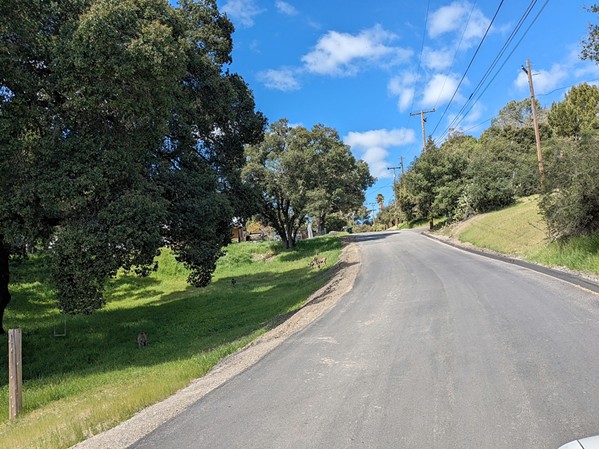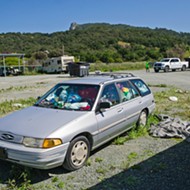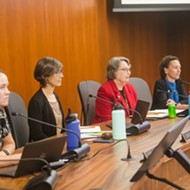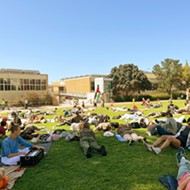[{
"name": "Newsletter Promo",
"id": "NewsletterPromo",
"class": "inlineCenter",
"insertPoint": "4",
"component": "15264767",
"requiredCountToDisplay": "0"
},{
"name": "Ad - Medium Rectangle CC01 - 300x250",
"id": "AdMediumRectangleCC01300x250",
"class": "inlineCenter",
"insertPoint": "8",
"component": "2963441",
"requiredCountToDisplay": "12"
},{
"name": "Ad - Medium Rectangle LC01 - 300x250",
"id": "AdMediumRectangleCC01300x250",
"class": "inlineCenter",
"insertPoint": "18",
"component": "2963441",
"requiredCountToDisplay": "22"
},{
"name": "Ad - Medium Rectangle LC09 - 300x250",
"id": "AdMediumRectangleLC09300x250",
"class": "inlineCenter",
"insertPoint": "28",
"component": "3252660",
"requiredCountToDisplay": "32"
}]
When Atascadero Public Works Director Nick DeBar moved to town, he was surprised by the way the city's road system worked.
While the city maintains about 145 miles of the roughly 190 miles of roadway in town and Caltrans takes care of the highway miles, residents are responsible for about 30 miles of roads.
"It was a little strange, even for me," said DeBar, who's also the city engineer. "Predominately ... they're old roads."
Many are inherited, built by E.G. Lewis or following the plans he laid out for the city in the early 1900s. They're also roads that SLO County didn't "accept" into its road maintenance system when they were constructed. So when Atascadero incorporated in 1979, it kept the status quo—agreeing to maintain the roads the county had already accepted into its system, but not the rest.
"There could be a whole host of reasons why the county didn't accept the roads into the county system," DeBar said. "It wasn't wide enough, or it was too steep."
Or the shoulder wasn't built to county standards or it was paved without the proper pavement. Generally speaking, the unmaintained roads are considered to be local roads, which are only used by the residents who live there, such as on the west side of town. A lot of the roads there, he added, were possibly cost-prohibitive to build to county standards at the time the area was developed.
Some of those roads aren't even paved, he added.
"They're dirt roads or DG [decomposed granite] or gravel roads, and you know, it seemed like once upon a time, a lot of the neighbors would ... have a tractor and they would go out and grade the road after each winter," DeBar said. "I think that some of that has been lost as ... new owners buy homes. A lot of the old-timers that used to do that aren't around anymore."
New people who move to Atascadero from places like the Bay Area or even the East Coast are often surprised by the issues they run into.
"Common complaints are potholes, drainage issues—primarily that, some vegetation issues," he said. "Primarily just condition of pavement, condition of rideability."
Many residents air their complaints directly to the city or on the Everything Atascadero Facebook page. New Times reached out to several residents who had posted road complaints but didn't hear back before press time.
One resident who moved to town in March 2024 said he was having an issue with Waste Management trucks tearing up a paved non-city-maintained road.
"I now have a 4-foot-wide, 1-foot-deep pothole in the middle of the road near my driveway," the resident posted on Facebook. "Has anyone else had issues like this?"
Several residents chimed in, calling out the condition of some of the roads in town. One respondent said that he lived on a road by Atascadero Lake Park with the same issues: "The city says it's the property owners that are supposed to do the upkeep on the road."
DeBar said the city does offer free cold-mix asphalt to residents who live on non-maintained roads with pothole problems and encouraged residents with road issues to reach out to Public Works' maintenance line at (805) 470-3148. He added the city's street maintenance website includes a map showing the unmaintained roads in town.
While the city used to have a local road repair program in partnership with Santa Lucia Bank—where it would help secure loans for people who lived on unmaintained local roads and came together as a neighborhood to work with a contractor to fix their roads—that program ended with the Dodd-Frank Wall Street Reform and Consumer Protection Act of 2010 and Santa Lucia Bank no longer exists. Atascadero is actively working to bring that program back, DeBar said.
Neighborhoods have rallied together to repair three or four roads in recent memory, DeBar said. They worked with the city to get zero-cost encroachment permits for improvements in the city's right of way.
"We have a zero permit fee for them to do that. It's a subsidized service because we don't want to make it harder for people to do that," DeBar said.
City Councilmember Susan Funk brought up the issue during a general plan update discussion in March where higher density zoning was proposed for areas of town with unmaintained roads.
She wondered if there was a way to make it easier for property owners looking to develop in those areas to get their roads up to code and eventually get accepted into the city's road maintenance plans. DeBar said it would be hard to require a developer to upgrade an entire road, especially the segments of it that don't directly interact with the property.
He told New Times that there are two things that need to happen for roads to be fully accepted by a city or county: First, the developer has to offer the road to the municipality and the municipality has to accept it. The second thing that needs to happen is the municipality also has to accept the road improvements into its roads system.
"If that second piece doesn't occur ... that does not obligate the city to maintain the roads. So that falls back on the developer or the residents on that road," he said.
In Atascadero's case, with the non-private, non-city-maintained roads, it has accepted the public right of way—which provides access for the public and for utilities to run electrical, gas, internet, and water—but not the road improvements.
"The purpose of a right of way is to provide kind of a conduit to provide services to the individual parcels," DeBar said. "Even with new roads that are built with new development, we still will accept the offer of public right of way ... but we still do not accept the road improvements into the city system, even though they're built to city standards."
That refusal of the road improvements is about the financial obligation that the city takes on, more than anything, he said. And the city wants to be able to maintain the roads that it's already obligated to take care of.
To help with the issue, city residents passed Measure F-14 in 2014. The half-cent sales tax is earmarked specifically for maintenance and upgrades on neighborhood roads that the city is responsible for and has helped resurface at least 52 miles of road.
"The F-14 money has been spent entirely on those local roads and the collector roads that would have never been touched," he said. "Because of the limited funding that we had at the time, ... we had to spend on El Camino or Santa Rosa."
Collector roads are streets that take residents from the main drags (aka arterial roads) into the neighborhoods. Before 2014, the city had enough money to maintain those arterial roads, but not much else.
Atascadero has spent more than $17 million on city-maintained local and collector roads in the last 10 years; however, F-14 sunsets in 2027. Atascadero is discussing putting a replacement measure on this November's ballot that would maintain the half-cent tax for local roads starting in 2027.
"It's been a game-changer for us," DeBar said. "There's been a lot of paving going on out there." Δ
Reach Editor Camillia Lanham at [email protected].
Latest in News
Comments (2)
Showing 1-2 of 2
Readers also liked…
-

Coast Unified teachers upset over new position's salary and qualifications
Oct 20, 2022 -

SLO police identify alleged driver who hit and killed couple
Dec 22, 2022 -

When the levee breaks: Oceano residents, county officials walk a tightrope of regulations to manage Arroyo Grande Creek, which some say led to the levee's failure in January
May 18, 2023








